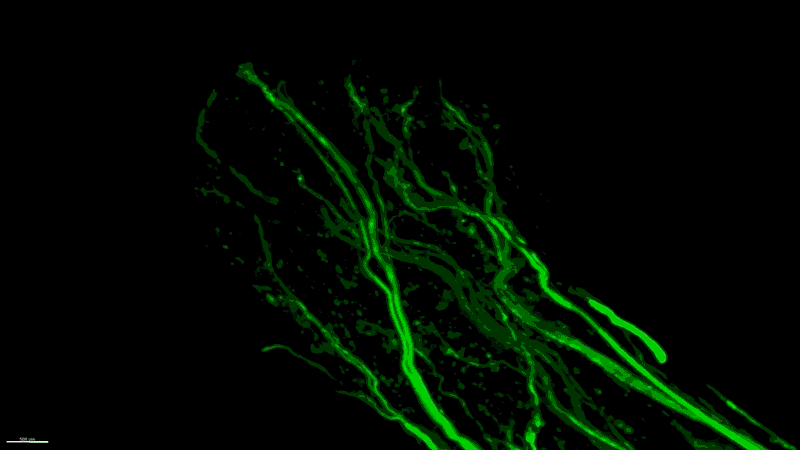Hello Nature readers, this is the news that matters in science today. You can also sign up to get it free in your inbox.

The nervous system of a mouse treated with the vDISCO technique glows green. Credit: @erturklab
‘Invisible’ mice reveal anatomical secrets
A new technique that makes dead mice transparent and hard like plastic is giving researchers an unprecedented view of how different types of cell interact in the body. The approach, called vDISCO, preserves the detailed structure of individual cells — although the animal shrinks by up to 60% in the process. Methods that turn entire organs clear have become popular in the past few years, but this is the first to make whole animals truly transparent.
Stats star wins major prize
Statistician Bradley Efron has won the 2018 International Prize in Statistics for pioneering the ‘bootstrap’ method for measuring the reliability of small data samples. The technique takes advantage of computer power to slice up a data sample in random ways and calculate whether a conclusion — such as the fact that two variables are strongly correlated — is solid. “He has inspired generations of statisticians and scientists,” says fellow stats-master Sally Morton.
Why 950 scientists don’t like Plan S
Biochemist Lynn Kamerlin tells Nature why she has coordinated an open letter — signed by more than 950 scientists — objecting to a bold plan by Europe’s major funders to make all the science they pay for open access. “Plan S funders limit their grantees’ choices of who to collaborate with and say that they can’t publish in journals that will be important to their careers,” says Kamerlin.
New hints of brain microbiome
Bacteria from the gut might also take up residence in our brains, suggest early findings that neuroscientists are calling potentially “revolutionary if it’s so”. Neuroanatomist Rosalinda Roberts and her colleagues discovered the bacteria while examining brain tissue with an electron microscope for an unrelated study about schizophrenia. Why haven’t researchers spotted the bacteria before? “Pairing up a neuroanatomist with a brain collection just doesn’t happen very often,” speculates Roberts.
FEATURES & OPINION
Lab leaders learn mental-health first aid
At the Francis Crick Institute in London, around 40 people are trained in mental-health first aid, learning how to help others cope with conditions such as anxiety, depression, eating disorders and psychosis. Biologist James Turner, one of the trainees, describes how better mental health leads to better science.
Drug developers must learn from failure
A decade’s worth of clinical trials for Alzheimer’s drugs has identified only one approved treatment. Yet most of the results from the failed studies will never be seen. The case demonstrates how access to evidence from disappointing drug-development programmes is essential to advancing the whole scientific process, argue two researchers at the European Medicines Agency.
A great physicist, in one graph
Physicist Jon Butterworth pays tribute to particle pioneer James Stirling, who has died aged 65. Butterworth describes how Stirling, despite being among the “rock stars for nerdy particle physicists”, “always had time for people (even mouthy students with naive questions)”. Butterworth also presents Stirling’s elegant graph describing particle-collider dynamics, which is so widely used that it has become part of the canon.
